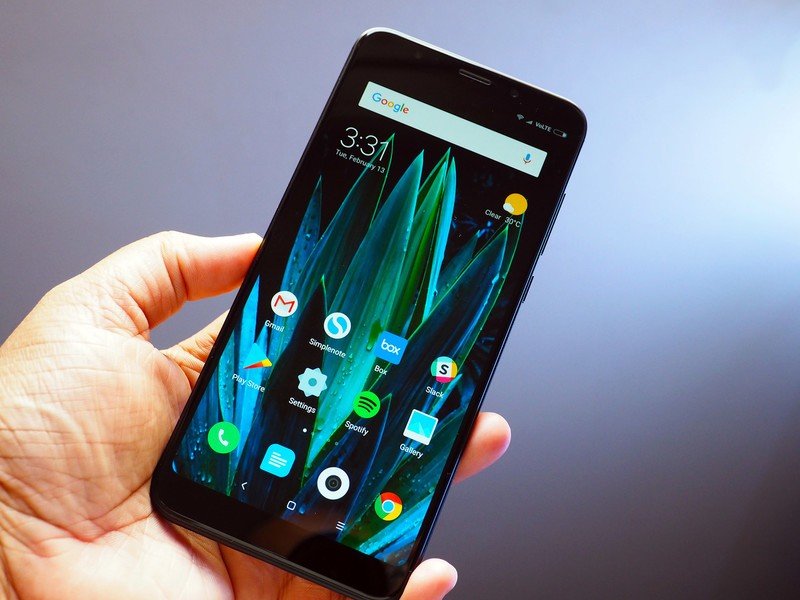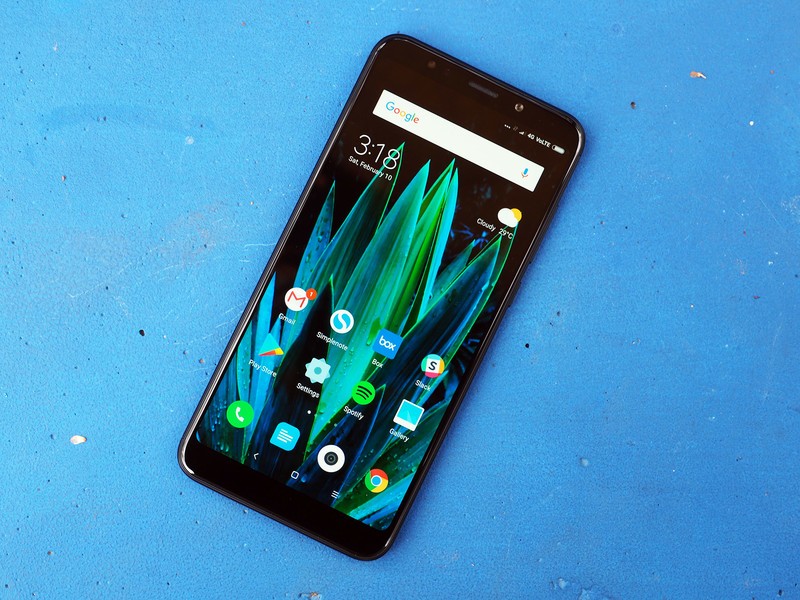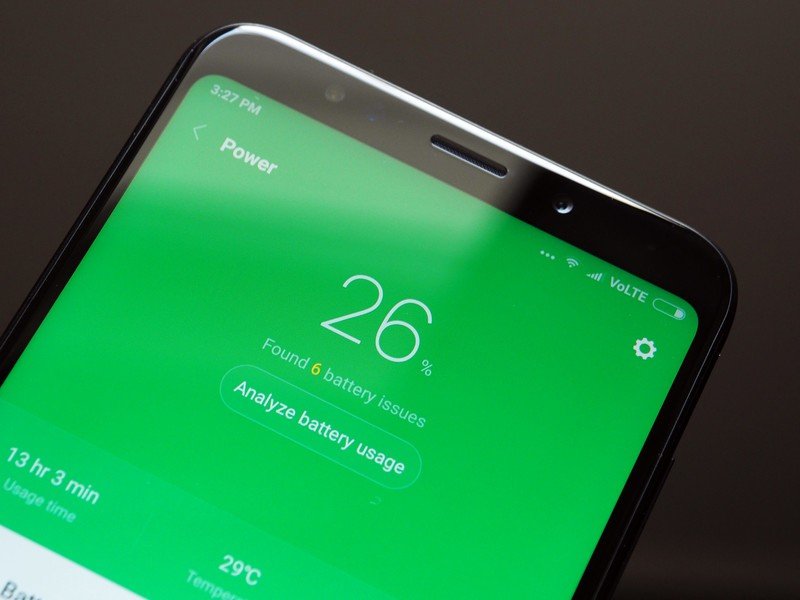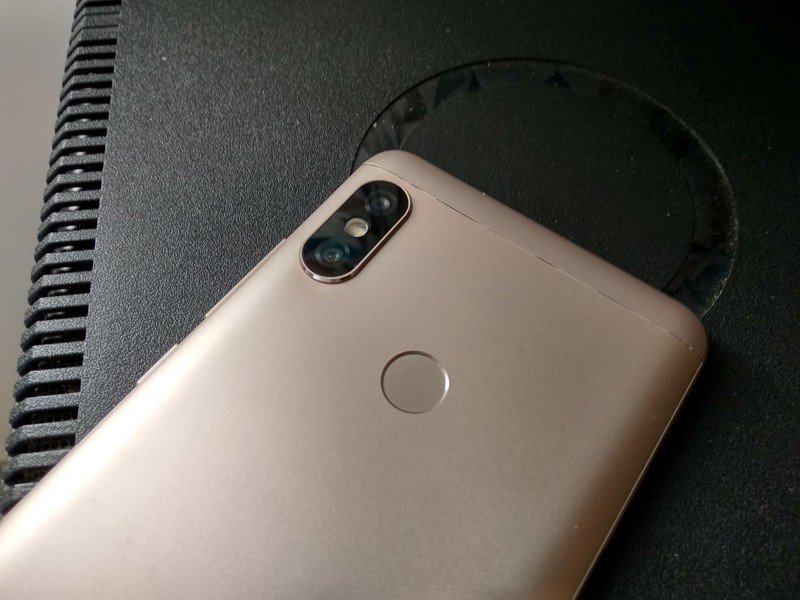Xiaomi Redmi Note 5 review: The best just got better

Xiaomi had a landmark year in 2017, edging past Samsung to become the largest handset manufacturer in India. A lot of that momentum was down to the success of the Redmi Note 4, which was the best-selling phone in the subcontinent last year.
As such, there's a lot riding on the Redmi Note 5. Before we get to the review, a little background on the naming convention. The Redmi Note 5 is identical to the Redmi 5 Plus, but because the Redmi Note series is more recognizable in India, Xiaomi is rebranding the phone in the country.
This isn't the first time Xiaomi rebranded a device for the Indian market. Last year's Redmi Y1 initially launched as the Redmi Note 5A in China, and the Android One-based Mi A1 was a rebrand of the Mi 5X.
Although the internal hardware is identical to last year's Redmi Note 4, the Redmi Note 5 does have a few tricks up its sleeve. Let's find out if the device has what it takes to further Xiaomi's ambitions in 2018.

Xiaomi Redmi Note 5 Specs
| Category | Features |
|---|---|
| Operating System | MIUI 9.2 based on Android 7.1.1 Nougat |
| Display | 5.99-inch 18:9 FHD+ (2160x1080) IPS LCD panel403ppi pixel density450nits maximum brightness |
| SoC | Octa-core Qualcomm Snapdragon 625Eight Cortex A53 cores at 2.0GHz14nm |
| GPU | Adreno 506 with Vulkan API, OpenCL 2.0, and OpenGL ES 3.1650MHz |
| RAM | 3GB/4GB |
| Storage | 32GB/64GBmicroSD slot up to 128GB |
| Rear camera | 12MP with 1.25um pixel size and f/2.2 lensPDAF, LED flash1080p video recording |
| Front shooter | 5MP with LED light1080p video recordingBeautify 3.0 |
| Connectivity | LTE with VoLTEWi-Fi 802.11 a/b/g/n, Bluetooth 4.1, GPS, GLONASSMicro-USB, 3.5mm audio jack, IR blaster |
| Networks | LTE: 1/3/5/40/41GSM: 2/3/5/8WCDMA: 1/2/5/8 |
| Battery | 4000mAh batteryFast charging (5V/2A) |
| Fingerprint | Rear fingerprint sensor |
| Dimensions | 158.5×75.45×8.05mm |
| Weight | 180g |
| Colors | Gold, Rose Gold, Blue, Black |
About this review
I (Harish Jonnalagadda) am writing this review after using a combination of Redmi 5 Plus and Redmi Note 5 for over a month. I picked up the Redmi 5 Plus in January, and have been using the device for the last four weeks. With the Redmi Note 5 being just a rebrand of the Redmi 5 Plus, I'm comfortable sharing my thoughts on the device after using the Indian retail variant for just six days.
The Redmi Note 5 is running the latest global MIUI 9 build, which has Play Services built-in, whereas the Redmi 5 Plus is still on a Chinese version of MIUI. As such, I focused on the Redmi Note 5 when talking about the software. I tested both devices on Airtel and Jio's 4G networks in Hyderabad, India.

Xiaomi Redmi Note 5 Hardware
At its core, the Redmi Note 5 is identical to its predecessor. The phone features a similar design aesthetic and is powered by the same Snapdragon 625 chipset.
Be an expert in 5 minutes
Get the latest news from Android Central, your trusted companion in the world of Android
Xiaomi cut down the number of storage variants to two, but they're unchanged from last year: the base model now comes with 3GB of RAM and 32GB of storage, while the second variant offers 4GB of RAM and 64GB of storage.
The design itself hasn't changed all that much either, and although the Redmi Note 5 has more pronounced curves at the back — leading to better in-hand feel — the overall aesthetic is similar to the Redmi Note 4. Once again, the top and bottom sections at the back are made out of plastic, with the rest of the body crafted out of metal. To Xiaomi's credit, it's hard to make out that the antenna inserts are plastic, as they have a metallic finish.
The rest of the design is identical — the single speaker is located at the bottom next to the Micro-USB charging port, and the headphone jack along with the IR blaster is located up top. I gave Xiaomi a pass last year for sticking with the Micro-USB port, but in 2018 there's no excuse for the brand not to make the switch to USB-C.





Like its predecessor, the Redmi Note 5 features a hybrid SIM card tray, allowing you to either slot in two SIM cards or a SIM card and a microSD slot (up to 128GB).
There are two key areas that Xiaomi focused on with the Redmi Note 5: display and camera. The 18:9 FHD+ panel is a necessary change for 2018, and keeps the Redmi Note 5 competitive in this category.
Xiaomi has a strong track record when it comes to LCD displays, and the panel used in the Redmi Note 5 is one of its best yet. Colors are accurate out of the box, and you can tweak the color balance to your preferences from the settings. Sunlight legibility is also great, and I had no issue viewing the panel under harsh sunlight.
The two big changes in the Redmi Note 5 are the camera and display.
Because of the reduced bezels, Xiaomi had to get rid of hardware navigation buttons and instead switched to on-screen keys. That's a welcome change for me as I can finally configure the position of the back and overview buttons from the settings. Xiaomi (like Samsung) put the back button to the right of the home key, so it's great that the Redmi Note 5 comes with configurable on-screen navigation buttons.
As for everyday usage, the Snapdragon 625 is a well-known chipset at this point, delivering the ideal balance between performance and battery efficiency. It would've made more sense to go with the newer Snapdragon 630 as it comes with a higher-clocked Adreno 508 GPU, but Xiaomi is clearly playing it safe here.
Furthermore, Xiaomi has been optimizing the Snapdragon 625 for over a year now, so that could be the reason for wanting to stick with the older SoC. And even though it's a few years old, the Snapdragon 625 is one of the best chipsets in this segment — you're not going to see many lags or slowdowns in day-to-day usage.
While there isn't a whole lot of difference when it comes to the external design, Xiaomi says it is undertaking stricter quality control measures on the Redmi Note 5, leading to tighter tolerances. That should lead to fewer issues as the device starts making its way to customers in the coming weeks.
Xiaomi mentions that all four color options of the device — black, gold, rose gold, and blue — should be available within a month of the phone's debut. I caught a glimpse of the blue model last week, and if you're looking for a device that grabs attention, blue is the color to go for.
Battery life

With a 4000mAh battery, the Redmi Note 5 has similar battery life as its predecessor. To put it in another way, the phone is once again a battery champion. You'll easily get a day's worth of usage under heavy load, and more often than not, you can eke out two days' worth of usage from a full charge.
I routinely saw over eight hours' of screen-on-time spread over two days on a single charge. Battery longevity was one of the main reasons for the Redmi Note 4's success, and the Redmi Note 5 picks up where its predecessor left off.
As I mentioned before, my main issue when it comes to the battery is the lack of fast charging. Granted, with a 4000mAh battery under the hood, you're not going to need to top up in the middle of the day, but it's a glaring omission nonetheless.
The Mi Max 2 is the only device in Xiaomi's budget portfolio to offer Quick Charge 3.0, and the company says it made the exception because of the huge 5300mAh battery. The 4000mAh unit on the Redmi Note 5 takes an agonizing two hours to fully charge, with the phone taking a half hour to go from zero to 30%.

Xiaomi Redmi Note 5 Software
As I said for the Galaxy A8+, it's inexcusable for a phone launching in 2018 to not run Oreo out of the box.
Xiaomi isn't the fastest at rolling out platform updates, and one of the reasons why the manufacturer takes its time is the sheer size and complexity of MIUI.
Xiaomi mentions that it is working on Oreo update plans, but there isn't a timeline yet. Considering how slow the manufacturer was at rolling out Nougat to the Redmi Note 4 last year, there's a long wait ahead.
Also, MIUI's interface is in dire need of a visual refresh, with the smorgasbord of feature additions over the years making it feel bloated. Xiaomi took steps to speed up the interface in MIUI 9, and for the most part, the latest version of the ROM feels much more optimized.
MIUI 9 also introduced in-line replies from the notification window, two years after the feature debuted on AOSP. And while Xiaomi has gotten better at adding features to the interface, it's clear that MIUI needs a redesign from the ground-up.
MIUI 9 needs a visual overhaul, but there isn't another ROM that offers quite as many features.
On the subject of features, it is the sheer customizability of MIUI that makes it attractive to Xiaomi's core audience. MIUI has over 300 million users worldwide, and that number has grown significantly over the course of the last 12 months. If you've never used MIUI before, there's enough customizability on offer to change every facet of the interface.
Xiaomi paved the way for a lot of great features that made their way to other apps. The stock app — dubbed Messages — was the first to introduce a card-style layout for train tickets, with the feature developed for the Indian market. Microsoft's SMS Organizer offers a similar feature-set, but it's available on the Play Store.

It is features like the messaging app that make MIUI stand out. There are other small touches that add value to customers. The dialer, for instance, shows how many times your phone rang should you miss a call. The gallery has a built-in image editor that lets you remove background elements from photos with ease (and it does a great job at it).
It'd be great to see MIUI's messaging client and other stock apps make its way to the Play Store, but according to Xiaomi India's lead product manager Jai Mani, that isn't possible right now as the service hooks into MIUI's framework.

Xiaomi Redmi Note 5 Camera
The Redmi Note 5 has a 12MP camera with 1.25um pixels and an f/2.2 lens. If those specs look familiar, it's because Xiaomi is reusing the same module that was featured in the primary camera of the Mi A1.
After using standalone camera modules for each device in 2016, Xiaomi started standardizing hardware in its budget portfolio last year, and as a result, a lot of the devices in this segment have ended up sharing components.
The camera app offers a variety of shooting modes and live filters to choose from, and toggles for easily switching from photo to video modes or from the front camera to the rear. HDR is turned off by default, and enabling it leads to a slight delay when saving photos to the gallery.








As for image quality, the Redmi Note 5 is identical to the Mi A1 — photos taken in daylight have a lot of detail, but the camera suffers when it comes to low-light shots. Images come out soft and full of noise, and colors look washed out as well.
That said, the camera is better than what we've seen on the Redmi Note 4, but it doesn't warrant an upgrade if you're already using last year's phone.

Xiaomi Redmi Note 5 Bottom line
So little has changed from the Redmi Note 4 to the Redmi Note 5 that the latter could've been termed the Redmi Note 4 Prime instead. Xiaomi is decidedly playing things safe with the Redmi Note 5, and it's easy to see why.
There really wasn't a whole lot that was wrong with the Redmi Note 4, and by making a few key upgrades, Xioami is ensuring that the Redmi Note series stays relevant in 2018. And for those that are looking for the absolute best that a budget phone can deliver, there's the Redmi Note 5 Pro.
Sure, there are a few drawbacks with the device — the design is stale, there's no USB-C or fast charging, and you get Nougat out of the box — but the upgrades to the display and camera are enough to make it hold its ground in this category.
Upgrades to the display and camera are enough to make the Redmi Note 5 stay relevant.
Xiaomi knows how to play the budget segment more than any other manufacturer, and that's one of the main reasons why it is currently leading the pack. The Redmi Note 5 costs less than its predecessor, with the 3GB version retailing for ₹9,999 and the 4GB variant with 64GB of RAM costing ₹11,999 in the country.
That's a huge deal considering the competitive nature of the budget segment. It's also a win-win for Xiaomi — customers won't have to pay more to get their hands on the Redmi Note 5, and the manufacturer stands to make more revenue from each unit.
From the beginning, Xiaomi's business model hinged on producing units in small batches, which meant that the company could net more profits from sales as component costs bottomed out over time. With the brand now selling the same hardware as last year's model and reusing the camera hardware from the Mi A1, it's bound to make more money selling the Redmi Note 5 from the get-go.

Should you buy it? Of course
The most important phone in India isn't the Galaxy S flagship or the iPhone. It is the Redmi series, as this is the lineup that gets the most amount of attention, and increasingly, the majority of the sales. If you're already using the Redmi Note 4, then it doesn't make much sense to pick up the Redmi Note 5; you're better served by the Redmi Note 5 Pro.
But with the Redmi Note 4 being phased out, the Redmi Note 5 is a shoe-in replacement, one that should be more than adequate for the millions of customers that will be lining up to get their hands on a new budget phone in 2018. When you consider the fact that the 3GB model is available for under ₹10,000 it becomes an easier decision.
There's no question that the Redmi Note 5 will sell well; the only issue now is whether Xiaomi can meet the inevitable demand. That was a huge issue last time around with the Redmi Note 4, with the device unavailable for more than a few seconds every week, but with Xiaomi leading a renewed push into the offline segment, there should be more availability of the Redmi Note 5 in the initial launch window.
Xiaomi has also invested significant resources into local production, with all units of the Redmi Note 5 sold in the country locally assembled at its factories. That should also lead to faster turnaround times for new units.
And for the enthusiast users looking for the absolute best in this segment, there's always the Redmi Note 5 Pro, which starts off at ₹13,999.
Xiaomi Redmi Note 5 Pro review: King of the hill
The Good
- New 18:9 form factor
- Great value
- Two-day battery life
- IR blaster
The Bad
- No Oreo
- Same hardware as last year
4 out of 5
If you're looking for a no-nonsense device that offers the right mix of battery life and performance, you can't go wrong with the Redmi Note 5.

Harish Jonnalagadda is Android Central's Senior Editor overseeing mobile coverage. In his current role, he leads the site's coverage of Chinese phone brands, networking products, and AV gear. He has been testing phones for over a decade, and has extensive experience in mobile hardware and the global semiconductor industry. Contact him on Twitter at @chunkynerd.
